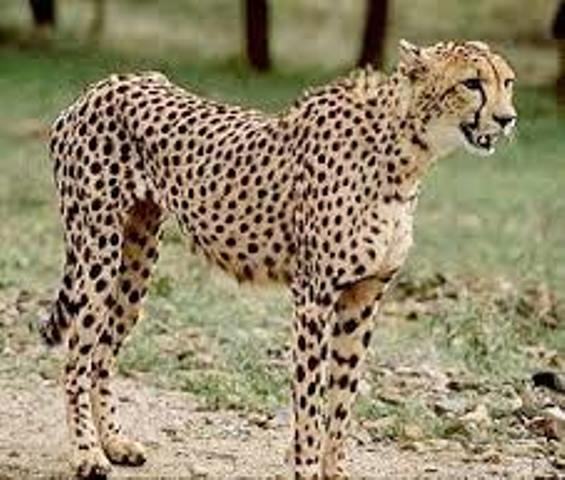On the occasion of International Cheetah Day, December 4, Tehran Times conducted an interview with Homan Jokar, director of the Asiatic cheetah project.
Jokar explained that the two cheetahs have been caught once they were cubs and as they were so young it was not possible to let them be on their own in the nature so the two have been kept in persevered areas since they were about four months old.
Eight years ago Koshki was captured by a shepherded and found by Department of Environment during the shepherd’s failed attempt to illegally sell the animal. Four years later Delbar was found in almost the same manner, he added.
Now that Koshki, the male cheetah, is eight and Delbar, the female one, is four the two are brought together from North Khorasan Province and Semnan Province respectively by last February, he said.
Jokar noted that the two have not mated yet and they may never mate as in the nature the female cheetah has the power to choose between the males but in captivity the animal is robbed of her natural trait.
Jokar added that unlike other mammals, female cheetah ovulates rarely. They also lack a regular reproductive cycle. All this makes them tough to breed in captivity. The female cheetah ovulates when, roughly speaking, she has feelings for the male cheetah. In other words only the suitable male cheetah, chosen by the female, can trigger the ovulation.
He highlighted that the main focus of this site is not to reproduce cheetahs, and that the reproduction can be considered as a side experimental study which may come in handy in case that “God forbid” there exists no hopes for them to reproduce in the future.
Formerly cheetahs were common throughout Asia and Africa and in Asia they were scattered in all countries comprising Lebanon, Palestine, Jordan, and India. Sadly after World War II and by the advent of cars, motorcycles, and guns the population started to shrink and now they only live in Iran, he regretted.
He added that currently it is not easy to determine the exact number of the cheetahs in Iran, however using cameras installed in different habitats of these animals it is estimated that there are roughly between 50 to 100 cheetahs throughout the country.
On the subject of the cheetahs’ life span, Jokar said that in the nature they live for 14 years tops and in captivity due to disease control and the well-balanced diet they can live up to 17 years which has never happened in Iran so far.
The site which is designed for the cheetahs in Pardisan Park has some distinguishing characteristics unique to the lifestyle of these animals in the nature. Jokar explained that the site is stretching 1.5 hectares comprising of two sectors. The first sector is now occupied by Delbar and Koshki and the second one will be used in case they reproduce.
The first sector includes 3 different parts called A, B, and C, he said, adding that Delbar stays in part A and Koshki in part C. “Just recently we have opened the part B doors as the breeding season has started and they both usually spend most of their times in part B.”
They usually live in dry open grasslands in the nature and they are of the habit to jump on a height and look at their territory every day as they wake up, he noted. “So in each part we have built a wooden structure for this reason.” There are two shelters in each part each embedded according to the wind direction, providing a warm place for them during cold seasons.
There are also four logs in each part for the male cheetah as in the nature the males mark their territories by spraying urine on the trees or logs. It is called scent marking, he highlighted.
Scent marking, also known as territorial marking or spraying when this involves urination, is a behavior used by animals to identify their territory. Not only does scent marking communicate information but can also indicate the presence of the territory-holder to prey species.
They are regularly being monitored by a vet and they have a keeper, too. “We do our best to simulate a life similar to what they have in nature and we treat them as wild animals and we have no intention to tame them,” he reiterated. (Maryam Qarehgozlou, Tehran Times)
**1664

Tehran, Dec 12, IRNA – Last winter two Asiatic cheetahs, Delbar and Koshki, were transferred to a preserved area in Pardisan Park, northwestern Tehran.

